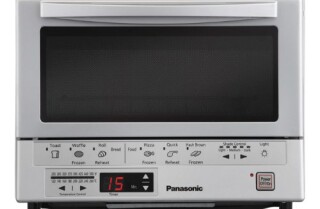Bread is one of the most popular quick-meal choices for just about anyone. Unless you're also making eggs or tea, you don’t need to do any extra cooking, and just a few slices will fill you up. There are about a million and one bakeries that have professionals skilled in baking bread of different types and flavors all over the world, but really, nothing beats making your own bread from scratch.
Not only does it save cost and give you an added skill, but it is also a form of recreation, a means to bond with friends and family, and if you get good enough at it, an opportunity to run a little business of your own.
Despite all of these advantages, however, making bread all by yourself can be a very tricky and stressful process, and you might be tempted to stop midway and never pick up a pan again. But, your work would be a lot easier and faster with the right recipe and tips, using the best bread makers, best bread pans, and other bread making tools and techniques which is exactly what this article offers.
Here are five tips to making your own bread:
What Type of Bread do You Want To Make?
There are three main types of bread:
Pan Bread
This type of bread rises a lot and so needs to be baked inside pans to accommodate the swelling.
Medium Bread
Bread in this category rises a little, but not as much as normal pan bread.
Flat Bread
This bread type rises only barely. They can be baked in flat pans.
Bread can be further classified based on taste, texture, flavor, and shape. The choice of what bread to make is the very first thing you should decide upon. Here is a list of the five most popular types of bread based on composition:
- Wholemeal bread
- French bread
- Rye bread
- Fruit bread
- Multi-grain bread
What Ingredients Do You Use In Making Bread?
Getting the right ingredients, and getting the ingredients right is a very important aspect of making bread. Several people think that flour is the most important ingredient in making bread, and while there is good truth to that claim, it may interest you to know that flour only constitutes a small percentage of everything needed to make delicious, nutritional bread.
Flour
There are various kinds of flour, and your choice will depend on the type of bread you are looking to bake. Make sure that it is lump-free and weevil-free.
Water
Water is a very important ingredient, used for mixing the powders together. The best water to use for baking is mineral water as it has no taste, and contains minerals that make the loaf taste better.
Yeast
Yeast is the ingredient that makes bread rise, and the best kind of yeast is instant yeast. It can be added directly to flour without having to be activated first.
Salt
Salt adds taste to anything, although the choice to use it in your bread depends on your personal taste. If you plan on using it, however, make sure that you usenon-iodized salt to prevent an unpleasant taste.
What Measurement Do You Use?
Ingredients and measurements vary, depending on the type of bread that you want to bake. If you have no idea about the measurements, you could purchase a cookbook for bread and follow the instructions laid down strictly.
Steps To Baking
Mixing
Your ingredient mixing steps will depend on the kind of bread you are making. There are three different types of mixing - namely the: straight dough method, modified straight dough method, and sponge method.
Kneading
This is the next step after you mix all of the ingredients together. For this, you could use a dough mixer, or go manual with your hands.
Bulk Ferment and Shaping
When you are done kneading, leave the dough in a container to begin fermenting. The process involves the yeast working on the flour, leading to it rising. After it rises, you can shape it into loaves, rolls, etc.
Proofing
This is also called the second rise. After the dough has been shaped, it should be left for a longer time to keep rising. Normally, it is expected to rise till the initial size doubles, however, make sure it doesn’t overproof as this will affect the final product.
Baking
The next step after the dough has proofed properly is to bake it in a hot oven. Make sure to time the baking to ensure that your bread doesn’t get burnt. As soon as it’s baked completely, your bread is ready to be eaten.
How Do You Preserve Your Bread?
It's best to consume your bread within the first three days for freshness and taste. However, if you want to preserve it for longer, the number one step to doing that is putting it in a freezer. As long as it is frozen, you can be sure it is in good condition. Also, store your bread in paper, and never plastics because the latter might encourage molding. Finally, bread boxes are another great way of storing your bread.







